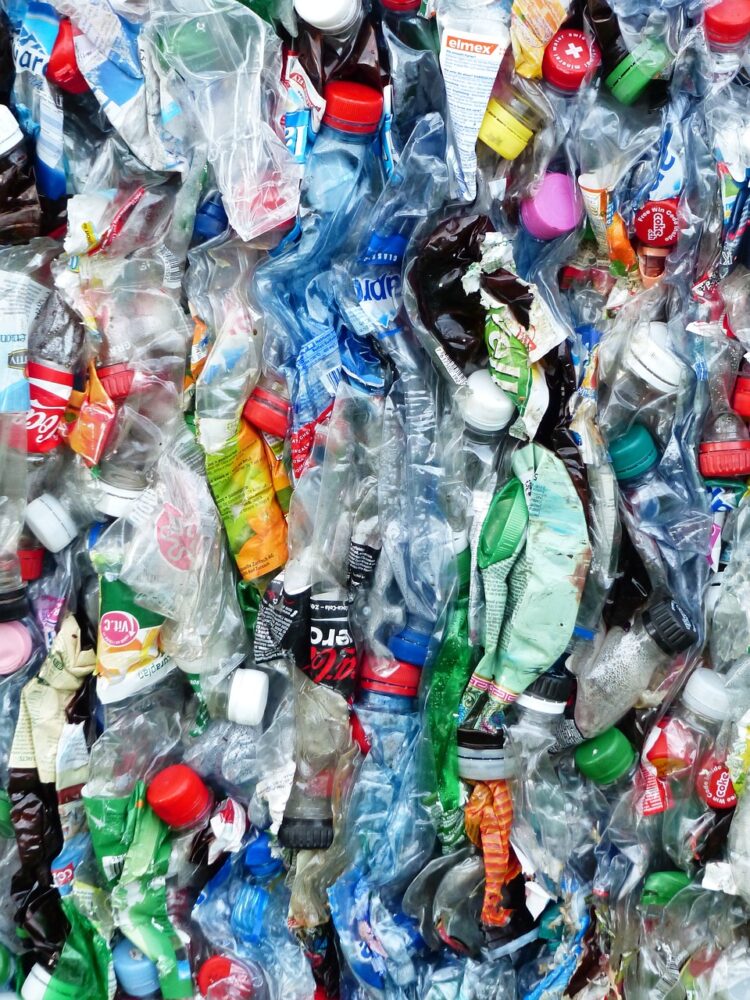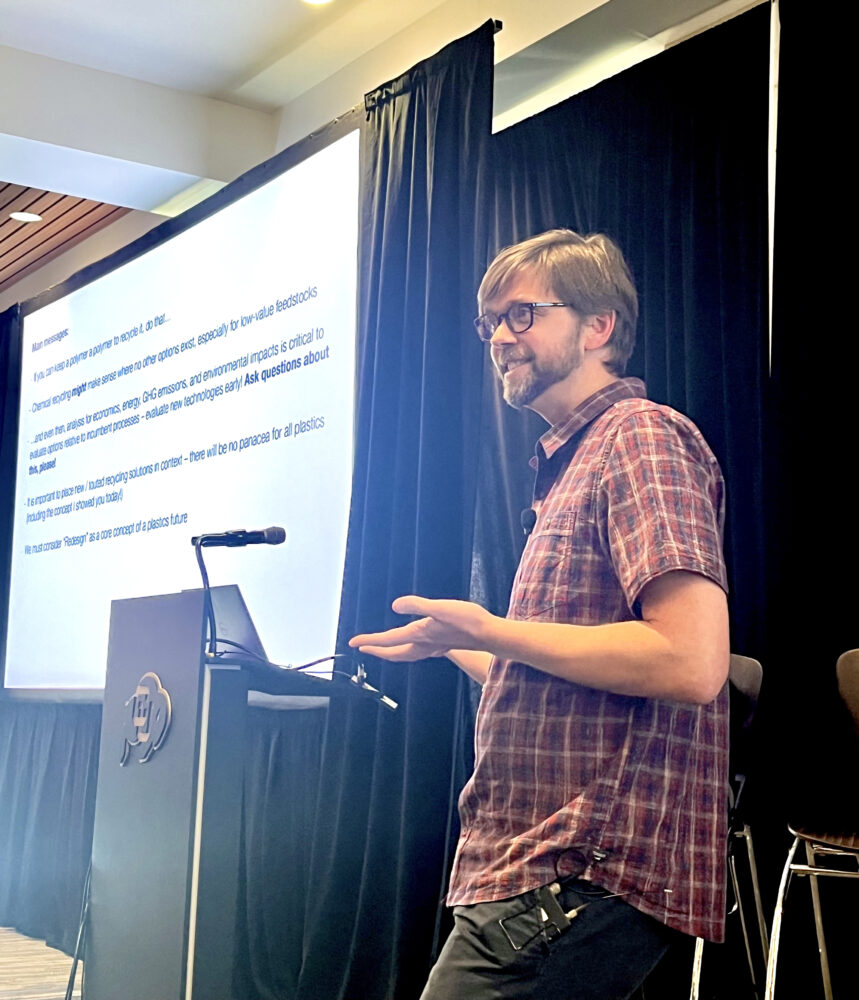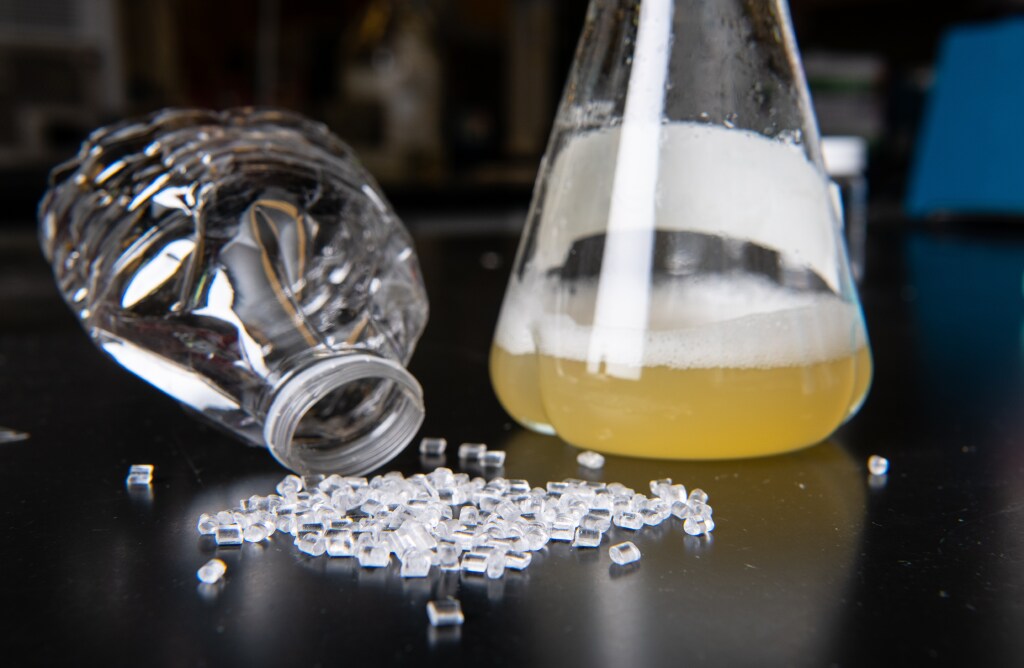
Taking on trash: How one scientist is addressing the complexity of the plastics problem
Gregg Beckham’s interest in his eventual research topic showed up early in life. But while his future scientific peers spent time digging for dinosaurs or soaked in seawater, Beckham was drawn toward an artificial aspect of his surroundings: plastic.
As a child in Oklahoma, Beckham remembers walking along the edge of town, observing litter and wondering why more plastic isn’t recycled. Now, as a researcher at the National Renewable Energy Laboratory, Beckham is still drawn toward environmental sustainability—and he has assembled a group of peers who share this interest.

Since 2020, Beckham has led the BOTTLE consortium, a project sponsored by the U.S. Department of Energy and named for its mission to develop “Bio-Optimized Technologies to keep Thermoplastics out of Landfills and the Environment.” Scientists involved in BOTTLE are working on a myriad of approaches to reduce plastic waste, like improved recycling technologies and redesigned plastics that can be recycled more easily.
“Plastics are so complex in terms of their formulation. There is no way that one solution is going to work for everything,” Beckham said in a talk Oct. 9 at the 61st annual CASW New Horizons in Science briefings at ScienceWriters 2023. “There is a huge need and drive for more comprehensive recycling strategies as well as redesign strategies.”
From microplastics in our blood to garbage patches in our oceans, the global plastic pileup is a collective result of waste mismanagement, minimal recycling, and high production rates. One study estimated that between 4 million and 13 million metric tons of plastic entered the ocean in 2010 alone due to inadequate waste management.
The inability to sort multilayered packaging prevents many products from being recycled. Mechanical recycling doesn’t work for all plastics and may yield low-quality materials, requiring production of new plastics to keep up with demand. The total amount of plastics produced since 1950 neared 10 billion metric tons in 2019.
Common alternatives to traditional recycling, which use heat to convert plastics to gas or liquid fuel, do reduce waste but also release harmful byproducts into the atmosphere. To make a dent in the plastics problem, Beckham said in his talk, solutions cannot simply replace one problem with another—they need to properly address their net effects on the environment and economy.
As a chemical engineer, Beckham is interested in developing recycling technologies that meet these criteria. His team is currently working on a two-step process to recycle multiple types of plastics at once—no sorting necessary.

First, a combination of acid, oxygen, and metals converts the mixture of solid plastics into a liquid. This “chemical soup” then becomes dinner for a genetically engineered soil bacterium, which can efficiently convert a variety of liquified plastics into a single chemical product to be collected for reuse.
Beckham described this new hybrid process last year in Science. Since then, his team has begun benchmarking the approach’s economic feasibility, environmental impact, and scalability, and testing materials, such as textiles and multilayer films, beyond the three types used in the original paper. While results are still preliminary, Beckham says the process is looking especially promising for recycling Styrofoam.
Beckham’s hybrid process won’t be used in large-scale recycling plants any time soon—his lab’s setup can only process a few kilograms of plastic at a time. In the meantime, Beckham said, consumers shouldn’t give up on plastic recycling. Instead, they should be careful to submit only materials that can be handled by their local recycling program. Beckham’s curbside program, for example, can’t accept plastic berry containers, which Beckham often finds himself fishing out of his neighbors’ bins.
“It is extremely important in each municipality for everyone to read what can be recycled,” Beckham said. “‘Wish-cycling’ just makes everybody’s life harder.”
During his talk, Beckham also advised journalists reporting on potential solutions for the plastics crisis to place new approaches into context. When evaluating recycling or redesign technology, for example, journalists should balance hype with a realistic amount of hope. Reporters can ask how new recycling approaches and technologies might shape up in terms of their economic and environmental impact, energy utilization, and greenhouse gas emissions. Or, as Beckham summarized, “Is it better than business as usual?”
Beckham’s lab also has projects on plastic-digesting enzymes, redesigned plastics, and developing industry partnerships with companies like Amazon and Patagonia to implement these new strategies.
“All solutions should be on the table,” he said in response to a question following his talk. “It’s important for us as humankind to ask the question: is this the right mix of solutions?”